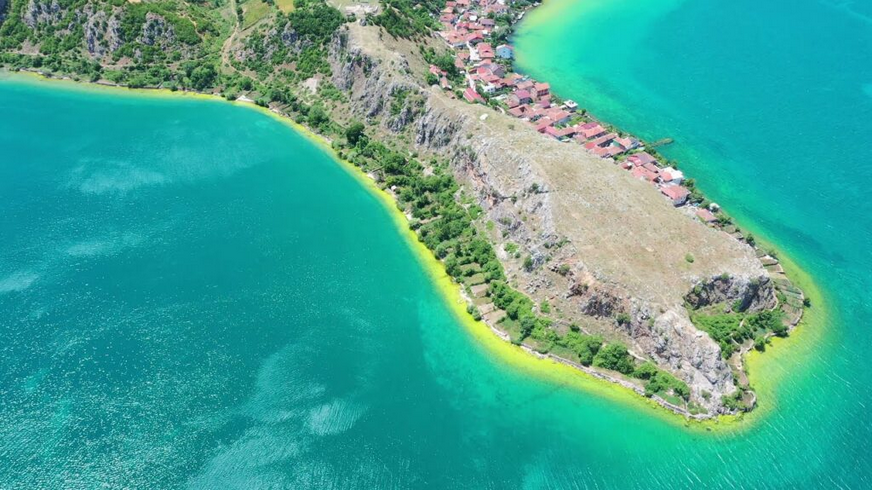Skënder Gjinushi, Chairman of the Academy of Sciences, recently met with the Albanian-Swiss archaeological expedition that has been exploring the Neolithic settlement of Lin. This collaborative project between the Archaeological Institute of the Academy of Sciences of Albania and the University of Bern (Switzerland) has provided new insights into one of Europe’s oldest lake settlements.
The leaders of the expedition, Professors Albert Hafner and Ilir Gjipali, shared updates on their research, revealing that the Lin settlement is primarily a stilt (lake) dwelling settlement, with parts submerged and others on land due to sediment accumulation over millennia. This year’s excavations, marking the end of the first phase of the “Lin 3” project, have yielded significant findings.
The recent fieldwork, which took place from June 24 to July 21, 2024, has been highly productive. Archaeologists uncovered a wealth of materials including stilts, ceramics, stone tools, flint and bone tools, plant remains, and animal bones—both domestic and wild. These artifacts are now under detailed study, contributing to our understanding of Neolithic life in the region.
The project’s findings, supported by laboratory analyses from the University of Bern and collaborations with the University of Oxford, confirm that the Lin settlement is the oldest known stilt dwelling settlement in Europe. This discovery places the site in a critical position within the study of early European civilizations.

The ongoing underwater excavations, set to continue until August 18, 2024, aim to further explore the lake’s submerged portions of the settlement. This second phase of research is focused on uncovering the settlement’s full extent, examining the complexity of its construction, and studying the material and spiritual culture of its inhabitants. The team is also investigating the agricultural practices and livestock economy of the Neolithic people, as well as their cultural and chronological connections with other settlements in the Korça basin, Northern Greece, and North Macedonia.
As the excavation progresses, necessary archaeological documentation is being prepared to secure the site’s protection and official recognition as an archaeological zone by the Ministry of Economy, Culture, and Innovation.
The Albanian-Swiss team’s work at Lin continues to shine a light on the sophisticated and ancient civilization that once thrived in this part of Europe, offering valuable insights into early human settlement patterns and cultural development.





